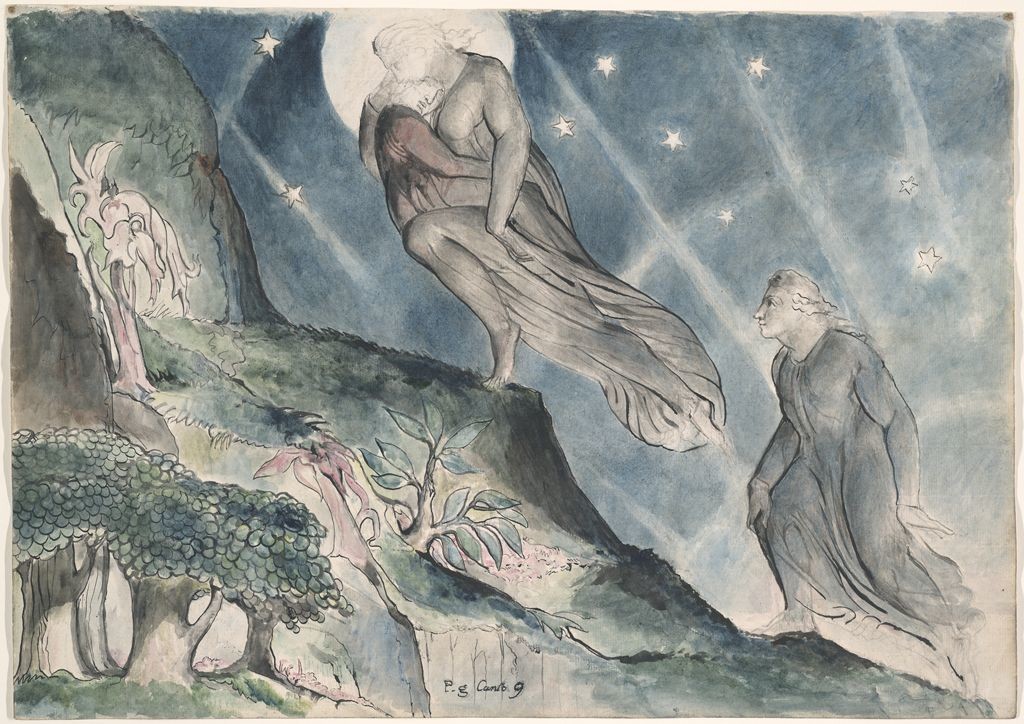
- This event has passed.
Search: Colloquium 30 (Spring 2020)
April 15, 2020 @ 1:00 pm - 1:50 pm
Lucia Carrying Dante in his Sleep by William Blake
Watercolor, black ink, graphite, and black chalk on off-white antique laid paper
1824-27
(H: 37.2 × W: 52.2 cm)
Fogg Art Museum, Harvard University
Reading
Dante, Purgatorio, cantos 1-16
Topic of Discussion
As you read in the introduction to Purgatorio, Archibald MacAllister refers to a “principle of interaction between the classical and the Christian worlds” (278), which a number of you have already observed. For our discussion be prepared to identify this principle in at least three of the cantos from the reading for this colloquium. One of the examples should come from the cantos that describe “Ante-Purgatory” (1-8), and one should come from the cantos after Virgil and Dante have passed through the gate into Purgatory itself. In support of your examples, be sure to have the other relevant texts from the classical and Christian traditions at hand during our meeting.
[mepr-show if=”rule: 8918″]
Connecting to the Colloquium
Join Zoom Meeting: https://rhodes.zoom.us/j/734815891
Dial by your location
+1 646 558 8656 US (New York)
+1 312 626 6799 US (Chicago)
+1 301 715 8592 US
+1 346 248 7799 US (Houston)
+1 669 900 9128 US (San Jose)
+1 253 215 8782 US
Meeting ID: 734 815 891
Find your local number: https://rhodes.zoom.us/u/ar8T0oZHO
[/mepr-show]
